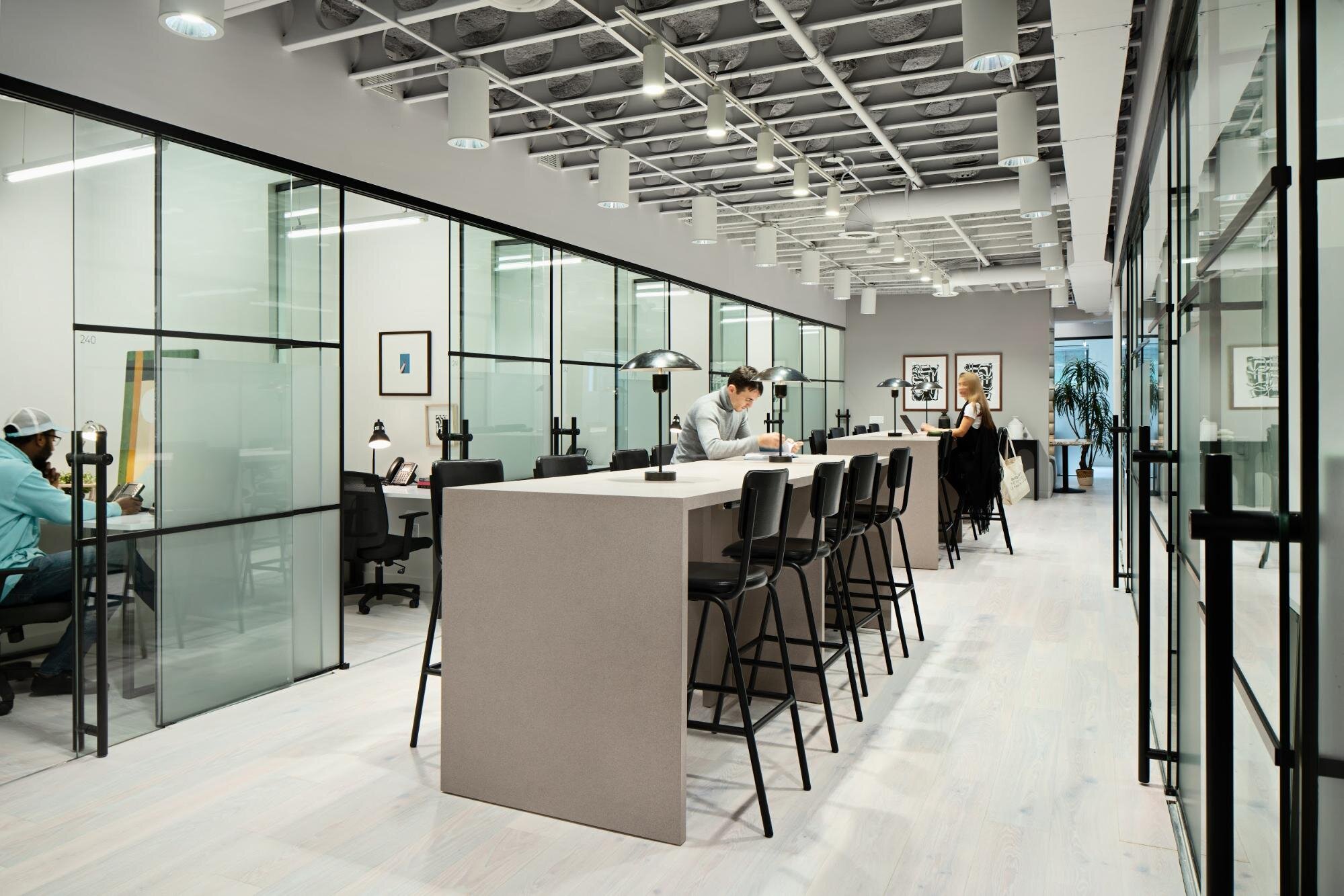Contents
By 2023, 41% of businesses expect to have adopted the hybrid working model, in which employees spend some time in the office and some time working remotely. However, despite the numerous advantages of hybrid working, it has drawbacks. The most important of these is creating a work environment that fits the demands of both employers and employees.
One method to achieve this goal is to create a space where workers like spending their time, both during work hours and outside of them. Below are some office fitouts shown to boost output while satisfying workers.
How to Create a Successful Hybrid Office

For hybrid work arrangements to be productive for your company, you may need to either alter your current office layout or move to a serviced office space that provides the amenities necessary to accommodate remote and in-person employees.
Make sure employees can put their heads down and focus on their job in solitude while also being open to chance encounters and discussing ideas with colleagues. A well-planned hybrid office layout should have the following features.
Focus on comfort first.
Since more and more people are used to working remotely, it is important to develop a hybrid workplace that feels like home to your staff. With the right combination of cozy office chairs, good lighting, greenery, carpeting, and other decors, you can create a work environment that inspires productivity and creativity in your staff. Rather than arranging people in rows at workstations, creating open, inviting areas where ideas may flow freely is better.
Provide areas for one-on-ones.
Discussions between office-based personnel and remote workers will become more commonplace due to the huge percentage of your remote-based workforce that works from home.
The most important thing is to invest in a powerful video conferencing system and create distinct areas, such as soundproof cubicles and huddle rooms, where office personnel may communicate confidently with their peers working remotely.
Create collaboration zones.
The hybrid working approach is about dissolving business and pleasure barriers. Bringing excitement to the workplace with social spaces like cafés, bars, and breakout rooms will strike up dialogues, let workers bond and pull them back to the office. Having more opportunities for serendipitous meetings and networking across departments is another benefit.
Think about more than just how things look when designing your hybrid office’s social spaces. In social settings, for instance, using sound-absorbing materials on the floor and ceiling can keep the noise level comfortable. At the same time, more subtle soundscapes can facilitate conversation.
Integrate cloud-based scheduling systems.
The challenge of designing a hybrid office for a workforce that fluctuates in size daily is one of the most complex parts of the concept. You may fix the issue by installing a cloud-based office reservation system and rearranging the furniture to create hot-desking spaces. As a result, people may reserve conference rooms and office cubicles for future use. Likewise, those who never leave their desks can enjoy the privacy of a designated work area.
You may shorten meeting room queues with an organized booking system, and workers won’t have to worry about showing up to an empty office.
Try creating workspaces that don’t feel like it.
Best-in-class hybrid offices frequently mask their true use. Instead, they emphasize variety by providing a wide range of settings, from casual break rooms to more formal atriums, so workers may pick a spot and get to work in the manner that best fits them. Modular workstations allow for creation of both public and private work areas, satisfying the needs of all employees.
Why You Should Design and Embrace a Hybrid Office
Businesses that embrace hybrid work models early on have a leg up on the competition and may expand into previously untapped markets.
According to a recent survey, most workers (73%) are interested in having some kind of job-related flexibility in the long run.
Similarly, studies suggest that if workers were denied any schedule flexibility, most would consider looking for new employment. However, nearly half (43%) are limited in their job search by a lack of flexibility. Therefore, hybrid workplaces are a key distinction for retaining top employees.
Hybrid employment cannot only improve employee retention but also revolutionize the hiring process by allowing you to reach out to potential applicants from a wider geographic and demographic pool.
Consistent with this, more than a third of businesses have begun providing location flexibility for most roles in the last two years. Companies may maximize their recruiting efforts and progress toward diversity, equality, and inclusivity targets by adopting a hybrid approach to hiring.

